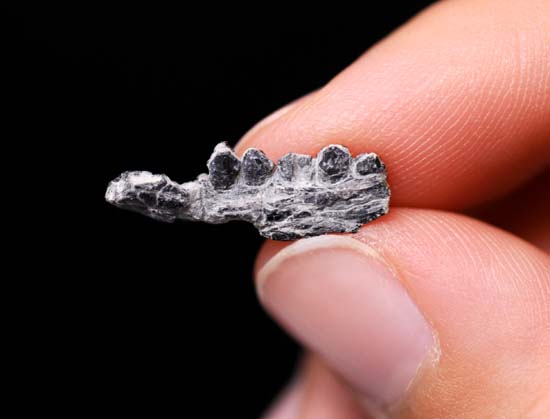Natural History Museum announces discovery of North America’s smallest dinosaur

Bones of a small dinosaur were discovered after scientists re-examined fossils from the 1970s.
By Daily Bruin Staff
Oct. 29, 2009 12:27 a.m.
The little guy’s finally getting his moment in the spotlight.
Last week, the Natural History Museum of Los Angeles County announced the discovery of the smallest known dinosaur ever found in North America.
Weighing just two pounds and with a body length of 28 centimeters, the Fruitadens haagarorum lived 150 million years ago during the Late Jurassic period. The find was made when an international team of scientists re-examined fossils uncovered in Colorado in the 1970s.
“The Fruitadens highlights once again the need to look at the diversity of small dinosaurs. There’s a lot out there that’s really interesting and, unfortunately, for a long time, the big guys were more sought after because of their size. They were seen as the superlative of the dinosaurs,” said Luis Chiappe of the Natural History Museum’s Dinosaur Institute.
Chiappe was part of the re-examination team led by Richard Butler of the Bavarian State Collection for Palaeontology, Germany, and the Natural History Museum, London.
The lag between discovery and classification was reflective of the backlogging that goes on in most large museums, Chiappe said.
In light of that, Graham Slater, who received his doctorate from UCLA in ecology and evolutionary biology last summer, was awed by the serendipity of finding the Fruitadens fossils.
“What is most astounding is that these tiny bones were overlooked for 30 years until a lucky paleontologist with a good eye happened to open that museum drawer. It’s funny, but that is often how some of the biggest discoveries are made,” he said.
Chiappe said the Fruitadens’ size suggested agility and likened its anatomy to that of a large roadrunner. The species had a combination of differently shaped teeth, including incisors, canine and chick-like teeth, suggesting the dinosaur was an omnivore. Its generalized diet of plants and animals, as well as its minute size, likely contributed to its survival and ability to evade larger predators, Chiappe said.
Blaire Van Valkenburgh, a professor of ecology and evolutionary biology and a research associate with the Natural History Museum, said the new species speaks to the diversity of the dinosaurs and fills in another niche in their ecosystem.
“The find is extremely significant because it augments our understanding of the size of dinosaurs and expands on the fossil record. It’s really intriguing. It shows that we need to think not only of the giants roaming around the landscape, but of those running around their feet,” she said.
The Fruitadens was a later member of heterodontosaurids, a family of early ornithischian dinosaurs that existed for about 100 million years. Ornithischians, known for their bird-like hip structure, were primarily herbivores and often served as prey for larger dinosaurs. For arriving later on the ornithischian time line, Chiappe said the species was surprisingly unspecialized.
“The more millions of years you had to evolve, the more sophisticated your specializations usually are, but this isn’t this case with the Fruitadens. This may have given them an advantage in adapting and explain their long existence,” Chiappe said.
Several fossils belonging to the four Fruitadens specimen studied can be seen in the museum’s dinosaur lab. In 2011, the Fruitadens will be part of a larger exhibit, Dinosaur Mysteries.
Slater explained the size bias in the fossil record that often causes smaller dinosaurs like Fruitadens to be overlooked.
“Big animals have bigger bones, which are much more likely to fossilize and be found by paleontologists. The odds are heavily stacked against finding fossils of small dinosaurs,” Slater said. “But as this discovery shows, when one does turn up, it makes us reconsider everything we thought we knew about dinosaurs.”
Anthony Friscia, an instructor in the physiological science department who studies small carnivorous mammals, agreed with Slater and drove home the importance of considering those on the smaller side of the spectrum.
“It’s just not as sexy to study little creatures, but nevertheless they probably make up most of the biomass in any given community in time and space,” he said.
As Slater gets started on his postdoctorate work in ecology and evolutionary biology, discoveries like that of the Fruitadens spur on his curiosity and drive to uncover more.
“It makes you remember that however much we think we know about the natural world, there are always new things to be discovered,” he said. “And sometimes you just need to open a drawer to find them.”

